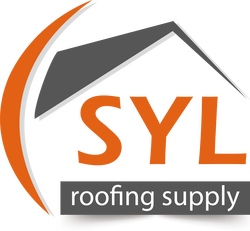Synthetic Roof Underlayment
Synthetic Roof Underlayment
Are you thinking about which synthetic roof underlayment you should have installed to ensure that your roof is as durable and sturdy as possible? Here at SYL Roofing Supply, we tell you about the three basic synthetic roofing materials that we underlay beneath your roof. These materials are asphalt-saturated felt, rubberized asphalt, and non-bitumen synthetic. We want to ensure that your roof has a solid underlayment, so it protects your home to the best of its ability. That is why we use top quality materials under your roof. Each one of these synthetic materials will benefit your roof, depending on the location of your home. It’s important to know about the underlayment of roofing and not just the roofing material itself. The underlayment is actually just as important as what your roof is made out of because it is the layer right above the actual roofing that protects your home from damage. We hope you gain insight from the information we provide about roofing underlayment because we supply the best in Tampa and Orlando!
Details About Synthetic Roof Underlayment
You probably want to know more details about the three types of roof underlayment we use. The first material that we want to tell you about is felt underlayment. This type of underlayment needs to be stapled down to ensure that it is fastened well. Felt underlayment is great for places with harsh winds. It’s great for preventing leaks and any holes. Felt underlayments that are not of top quality have a number of disadvantages, such as absorbing a lot of water. However, we use the best felt underlayment in the area, so do not worry! The second type of underlayment is rubberized asphalt. There are many rubbers that are used for underlayment, but this material is mainly used for resisting water and moisture. It will benefit those who live in wet climates. The third type of material is non-bitumen synthetic. This material is known for its strength but lightness. They are meant to resist fungus and mold if your home is prone to it.
General Installation
Even though all of the synthetic underlayment materials are installed slightly differently from each other, there is a general installation process to every one of them that we think homeowners should know about. We take into consideration limitations within the slopes of your home. Sometimes roofs that have intricate structures require certain methods to install. Another thing is the actual edges of the roof. We want to make sure that we wrap the material tightly around all of the edges of your roof, so moisture does not build up. Then, we make sure that we fasten down the underlayment well, so it does not budge.
Advantages And Disadvantages
The main reason that we provide the information that we do about synthetic underlayment is that we want you to know that there are advantages and disadvantages to every material depending on where you live. That is why we want to make sure that you choose the best underlayment for you. Plus, we are here to help in any way we can in your underlayment process to ensure that your roof is fully protected.
Ice and Water Underlayment
Ice and water shield is a waterproof membrane used to protect your roof from ice and water damage. Its main purpose is to protect your roof decking if water gets underneath your roofing material (asphalt shingles, metal roof, etc.
it is a superior underlayment when compared to traditional felt paper. … It will keep your roof dry even when water flows backward and in driving rain. It lasts longer and degrades more slowly than an asphalt product and is safer and easier to install.
Do I need ice and water shield on my shed roof?
As ice melts and the water freezes in a continual cycle, the water will creep up the roof and underneath the shingles. This is why it’s important to have Ice and Water Shield because it gives a better protection barrier against ice.
Tile and Metal – QUIK-Stick HT
High-temperature (smooth poly surface)
QUIK-Stick HT is an SBS modified self-adhering membrane reinforced with non-woven fiberglass mat for extra strength and durability. Its non-abrasive polyester surface is excellent for use in tile and metal applications. For use on decks 2:12 and greater
Benefits
- Offers a skid resistant, polyester surface.
- Silicone-treated, split-back, release film allows for easy installation and handling
- Softening point is a minumum of 250 degrees Farenheit
- May be installed directly to concrete, plywood, wood composition board and gypsum
- Self seals around nails
- May be used in newe construction or re-roofing
- Offers greater tear resistance than traditional felt underlayment
- Provides protection for critical areas such as rakes, eaves, valleys, flashings, hips, ridges, dormers and skylights
- Provides excellent low temperature flexibility
- May be left exposed up to 120 days prior to application of finished roof
- Florida Approval (FL #17401)
- ICC Approval (ESR-3123)
- Miami-Dade Approval
Contact Us
SYL Roofing Supply are professionals who want your roof to have the best synthetic roof underlayment that it can have. That is why we tell you all about the three main types of roof underlayment so you can choose the perfect one for your home. Call or visit us today in Tampa and Orlando for more information about underlayments!
